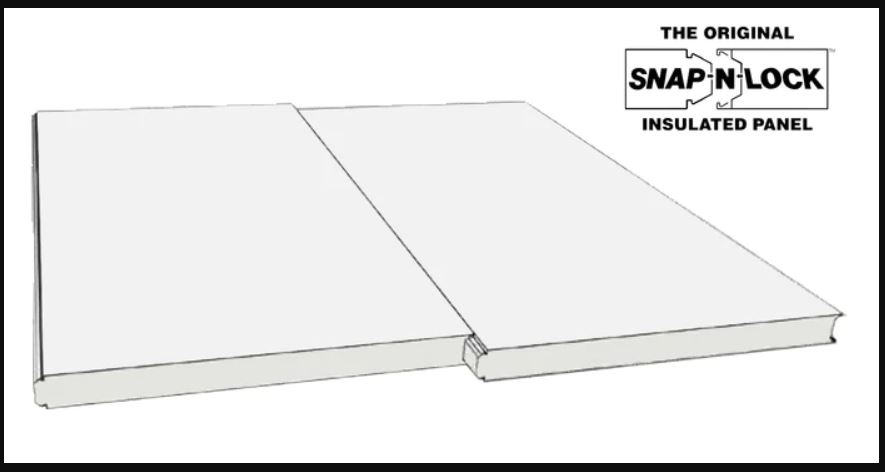Insulated aluminum roof panels are an innovative building material that combines durability, energy efficiency, and aesthetic appeal. These panels are becoming increasingly popular in both residential and commercial construction due to their superior performance and versatility. This comprehensive guide will explore the features, benefits, installation process, and applications of insulated aluminum roof panels.
What are Insulated Aluminum Roof Panels?
Insulated aluminum roof panels are composite structures made of an aluminum exterior and a core of insulating material, typically rigid foam such as expanded polystyrene (EPS) or polyisocyanurate (PIR). The aluminum outer layers provide strength and durability, while the insulation core offers excellent thermal performance. These panels are designed to create a barrier that prevents heat transfer, making them an ideal solution for maintaining consistent indoor temperatures.
Features of Insulated Aluminum Roof Panels
Durability: Aluminum is known for its resistance to corrosion and harsh weather conditions, making these panels long-lasting and low-maintenance.
Thermal Insulation: The insulation core significantly reduces heat transfer, enhancing the energy efficiency of buildings.
Lightweight: Despite their strength, aluminum roof panels are lightweight, which simplifies transportation and installation.
Fire Resistance: Many insulated aluminum panels have fire-resistant properties, contributing to building safety.
Design Flexibility: Available in various colors, finishes, and profiles, these panels can complement any architectural style.
Sustainability: Aluminum is recyclable, and the energy savings from improved insulation reduce the environmental impact.
Benefits of Insulated Aluminum Roof Panels
Energy Efficiency
One of the most significant advantages of insulated aluminum roof panels is their energy efficiency. The insulating core minimizes heat loss in winter and heat gain in summer, reducing the need for heating and cooling systems. This results in lower energy bills and a smaller carbon footprint, making these panels an eco-friendly choice for environmentally conscious builders and homeowners.
Enhanced Comfort
By maintaining a stable indoor temperature, insulated aluminum roof panels create a more comfortable living or working environment. They help prevent drafts and cold spots in the winter and keep interiors cool during the summer, contributing to overall indoor comfort.
Longevity and Low Maintenance
Aluminum's natural resistance to rust and corrosion ensures that these panels have a long lifespan. They can withstand extreme weather conditions, including heavy rain, snow, and high winds, without deteriorating. Additionally, they require minimal maintenance compared to other roofing materials, which saves time and money over the long term.
Aesthetic Appeal
With a wide range of finishes and colors, insulated aluminum roof panels can enhance the visual appeal of any building. Whether aiming for a modern, sleek look or a more traditional appearance, these panels can be customized to meet aesthetic preferences. The availability of different profiles, such as ribbed or smooth, adds to their versatility.
Quick and Easy Installation
The lightweight nature of aluminum panels makes them easier to handle and install than traditional roofing materials. They often come in large sheets, which speeds up the installation process. This can be particularly beneficial for large commercial projects where time is of the essence.
Installation Process
Installing insulated aluminum roof panels involves several key steps to ensure a secure and effective roof system.
Preparation
Assessment: Evaluate the roof structure to ensure it can support the new panels. This may involve checking the existing roof for damage or weaknesses.
Measurement: Accurately measure the roof dimensions to determine the number of panels needed.
Planning: Develop an installation plan, including panel layout and any necessary flashing or trim.
Installation
Roof Deck Preparation: Ensure the roof deck is clean, dry, and free of debris. Any existing roofing material may need to be removed.
Insulation Layer: If additional insulation is required, it can be added at this stage. However, many insulated aluminum panels already include a sufficient insulation core.
Panel Placement: Begin placing panels from one end of the roof, ensuring they are aligned correctly and securely fastened. Seams between panels should be tight to prevent water infiltration.
Fastening: Use appropriate fasteners and techniques as specified by the panel manufacturer. This typically involves screws or clips designed for aluminum roofing.
Sealing: Apply sealant to seams and around any penetrations, such as vents or chimneys, to ensure a watertight installation.
Flashing and Trim: Install flashing and trim to cover edges and joints, providing additional protection against the elements and enhancing the roof’s appearance.
Applications of Insulated Aluminum Roof Panels
Residential Buildings
Insulated aluminum roof panels are ideal for residential homes, including single-family houses, townhomes, and multi-family units. They offer excellent energy efficiency, which is particularly beneficial for homeowners looking to reduce their energy costs. Additionally, their aesthetic versatility allows for a range of design options to suit different architectural styles.
Commercial Buildings
In commercial construction, these panels are often used for office buildings, retail spaces, and warehouses. Their durability and low maintenance requirements make them a cost-effective choice for large-scale projects. The energy efficiency of insulated aluminum panels also helps businesses lower their operational costs.
Industrial Facilities
Industrial buildings, such as factories and storage facilities, benefit from the strength and insulation properties of these panels. They can withstand the rigors of industrial environments while maintaining stable indoor temperatures, which is crucial for protecting machinery and stored goods.
Agricultural Structures
Insulated aluminum roof panels are also suitable for agricultural buildings, including barns, stables, and greenhouses. Their insulation properties help create optimal conditions for livestock and plant growth, while their durability ensures they can withstand the demands of agricultural use.
Conclusion
Insulated aluminum roof panels represent a significant advancement in roofing technology, offering a combination of energy efficiency, durability, and aesthetic appeal. Their benefits extend across various applications, making them a versatile choice for residential, commercial, industrial, and agricultural buildings. As energy efficiency and sustainability become increasingly important in construction, the demand for insulated aluminum roof panels is likely to continue growing. Whether you are a homeowner looking to upgrade your roof or a builder seeking high-performance materials, insulated aluminum roof panels provide a reliable and cost-effective solution.





Comments